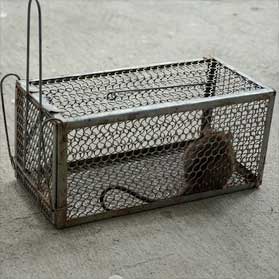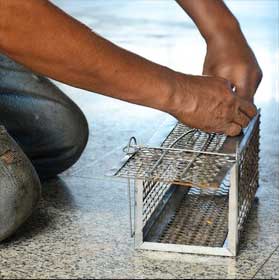Squirrel Control & Removal - Squirrels in the Attic Sarasota Bradenton
Squirrel
Nuisance Concerns
Squirrels have easily adapted to humans. They frequently use buildings as nesting areas. Squirrels love to break into a house and stay in an attic or soffit. They often find a small opening and will chew a wider hole to gain access to the building. They bring nesting material into the home, and make quite a bit of noise scurrying around and caching nuts. They often fall down the chimney flue and make a lot of noise or enter the fireplace. Sometimes they fall down a wall from the attic and get stuck. They often chew their way into commercial buildings or apartments. They often enter the attic through the gable vent. Squirrels can cause a fire hazard in homes by bringing in nesting material, and by chewing on power lines. Squirrels can leave behind a lot of droppings and urine in the attic. The droppings not only smell bad, but they pose a biohazard, and the smell attracts new squirrels. I highly recommend attic decontamination services if you've had squirrels living in your attic.
Food And Feeding Habitats
Eastern gray squirrels eat a range of foods, such as tree bark, tree buds, berries, many types of seeds and acorns, walnuts, and other nuts, and some types of fungi found in the forest, including fly agaric mushrooms. They can cause damage by tearing the bark and eating the soft cambial tissue underneath.
Eastern gray squirrels have a high enough tolerance for humans to inhabit residential neighborhoods and raid bird feeders for millet, corn, and sunflower seeds. They also raid gardens for tomatoes, corn, strawberries, and other garden crops. On very rare occasions, then their usual food are scarce, eastern gray squirrels also prey upon insects, frogs, small rodents including other squirrels, and small birds, their eggs, and young. They also gnaw on bones, antlers, and turtle shells- likely as a source of minerals scarce in their normal diet.
Den Sites
Eastern Gray Squirrels nesting in your home attic or building most commonly make their nest at the edge of your roof, often down in the eave, or soffit. Squirrels are less likely to run all through the entire attic the way rats do. They often just stick to the edges.
Female squirrels have two litters of baby squirrels per year. The first litter is in late winter, often in January or February. The second litter in in late summer, usually in August. Mother squirrels seek out a high place in which to make a nest, safe from predators. Baby squirrels are very vulnerable. Sometime they make nests in treetops. However, I much more commonly see them make nests inside attics of homes and buildings.
Health Risk
Mites, ticks, lice, fleas, roundworms, tapeworms, and protozoa can parasitize gray squirrels. Chiggers, scabies and mange are also some issues. Their droppings and urine can create odor issues and stains to interior and exterior walls. The droppings can pose a biohazard in homes that have had ongoing issues that have been ignored. The greatest health concern is the fire hazard risk caused by the squirrels chewing on electrical wires. When a squirrel creates a nest inside the home or business, there is a chance that these parasites, mold spores, or orders described above could travel throughout the building. The greatest health risk is fire.




